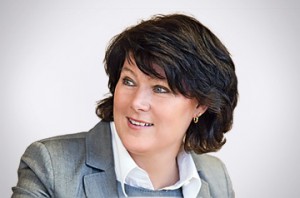
After more than 40 years of operation, DTVE is closing its doors and our website will no longer be updated daily. Thank you for all of your support.
RTL: linear still dominant, but on-demand measurement urgently needed
Linear TV is still the dominant force in TV viewing but there is an urgent and growing need for broadcasters and service providers to partner on audience measurement to enable content providers to make money from non-linear viewing, according to Anke Schaferkordt.
Speaking at ANGA COM in Cologne this morning the RTL Deutschland co-CEO said that linear TV is still working, but 47 million video-capable devices were sold in Germany last year and the growing tendency to view video on mobile devices means a growing tend to consume more short-form video.
“The largest number of hours is still spent with linear TV but the younger the target group becomes the lower the linear TV share,” said Schaferkordt, adding that RTL is thinking of ‘total video’.
Linear TV producers are targeting a very large target group but the broadcaster is keeping an eye on what 17 year-olds want to watch. “Within RTL Group we are present on YouTube and we are the biggest European content provider on this platform,” she said. “We started very early. We have MCNs and we are the market leader in the US and Europe.”
Schaferkordt said that all this means that there is a need for “a common currency” in audience measurement across all platforms. “As long as I can’t measure the data this very targeted marketing is not feasible. We don’t have the detailed socio-demographic data. Whenever you go online it is simpler.”
The automated marketing of video advertising on the web that RTL has invested in in the US would be rolled out in Europe too, she said.
Schaferkordt highlighted that RTL is also active in social media and uses the data available to influence its content. She said that one-to-one communication with users and viewers is possible and the broadcaster does have user groups that give active feedback on its TV formats.
Speaking at the same session, Hannes Ametstreiter, CEO, Vodafone Deutschland, said that measurement of audiences was key and new technology would enable this, allowing advertising to be more targeted and more specific. “We are only at the beginning of this transformation,” he said, adding that operators and broadcasters needed to strike new forms of agreement to exploit the possibilities more fully.
“We need to open ourselves and have partners. Through technology and content there will be new ways to approach the customer.”



